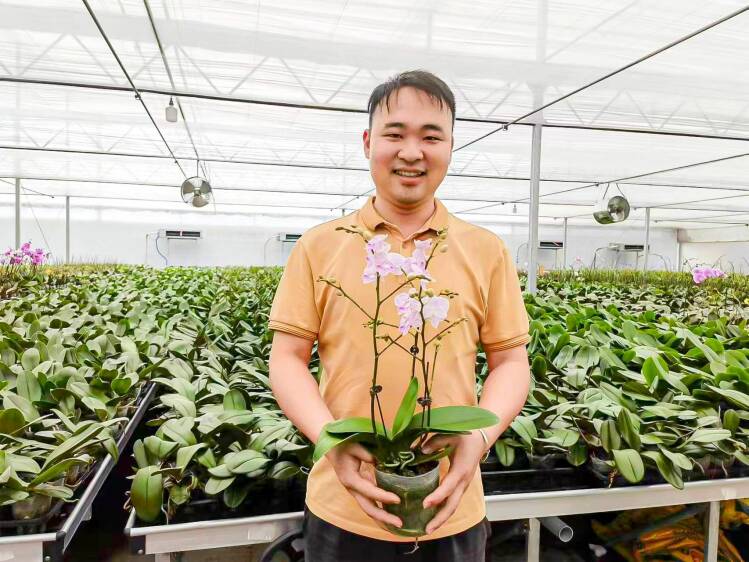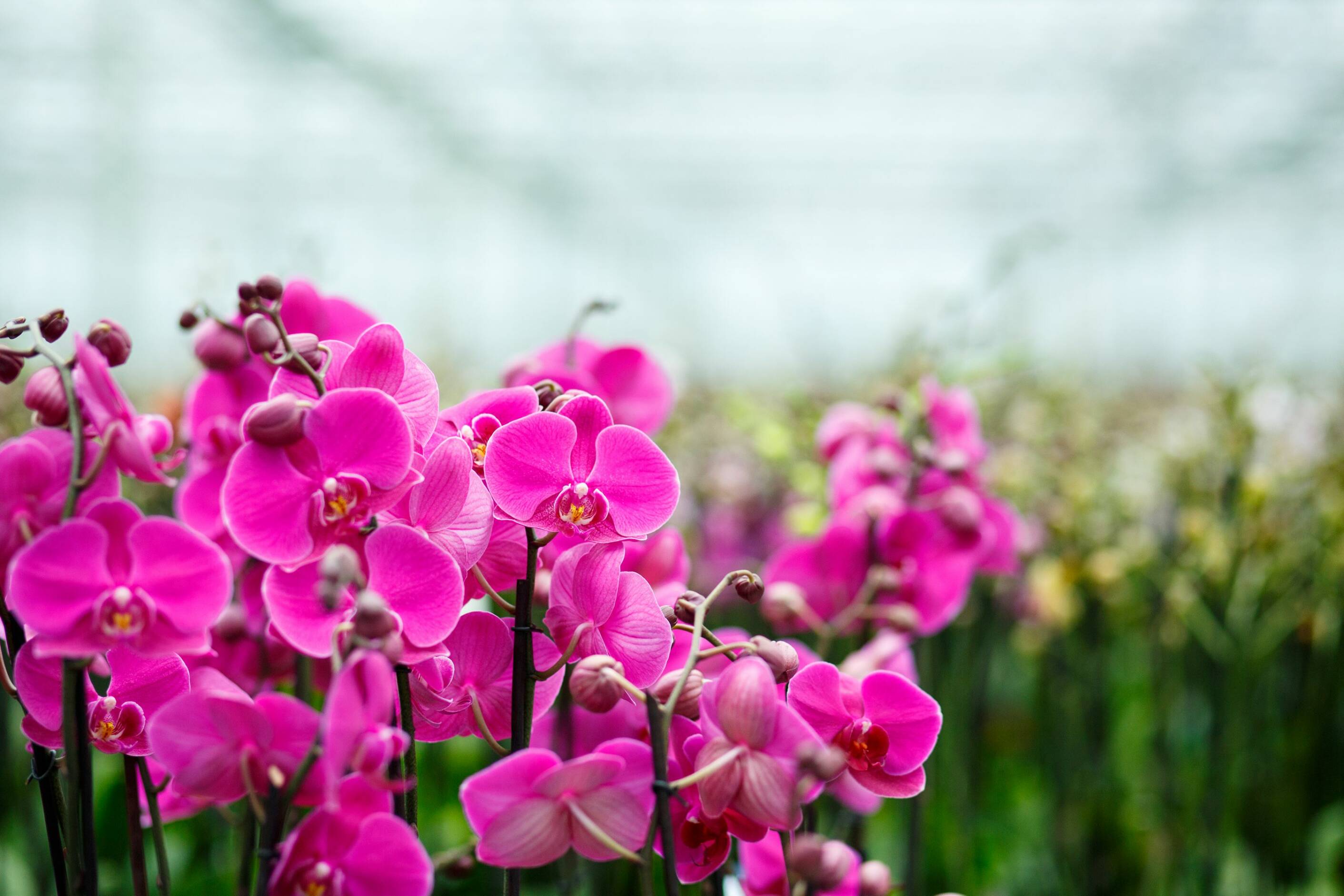Tomorrow's nursery starts here! Stay ahead of the curve and receive the latest news on horticultural innovations in your mailbox.
Newsletter

subscribe


Go to previous article

Go to next article

Back to world map
SCROLL DOWN
Witnessing the application of these groundbreaking innovations for the first time was an exhilarating experience for Weiwei LI and his team.


Witnessing the application of these groundbreaking innovations for the first time was an exhilarating experience for Weiwei LI and his team. The realization that they were revolutionizing their industry and paving the way for a more sustainable future filled them with pride and motivation to push the boundaries even further.
However, implementing such technological advancements does not come without its challenges. The significant capital investment required for adopting these innovations poses a considerable obstacle for many growers. Nonetheless, as the industry progresses and awareness grows, it is anticipated that these challenges will diminish, allowing more nurseries to embrace the transformative power of technology.
Weiwei LI and his team meticulously developed and implemented these innovations with a clear purpose: to reduce labor-intensive tasks and optimize production efficiency. By leveraging technologies such as intelligent light supply systems, ebb-and-flow systems, waste heat heating systems, automatic potting systems, and intelligent greenhouse control systems, they have successfully achieved these objectives.
As China undergoes rapid urbanization and economic development, there is a shift in the labor force from agricultural work to other industries. Many young people are drawn to urban areas, creating a shortage of skilled workers in rural areas where flower cultivation is often concentrated. This labor shortage poses challenges in terms of plant maintenance, harvesting, and other labor-intensive tasks. Growers must explore solutions such as automation, mechanization, and attracting and retaining skilled workers to maintain production levels.
Weiwei LI, from the vibrant city of Dongying in China's Shandong province, is the driving force behind the Dongying Shuangfu Flower Co., Ltd. nursery. Together with the Yunnan and Guangdong provinces, Shandong is considered one of the country’s leading flower-produces thanks to its favorable climate and diverse landscapes that allow for the cultivation of a wide variety of cut flowers, potted plants, and other floral products.
Dongying Shuangfu Flower Co., Ltd. boasts an extensive range of plants, including marantaceae, anthurium, spathiphyllum, rose, strelitzia, bromeliad, phalaenopsis, curcuma alsimatifolia, and many more. However, it is their dedication to adopting cutting-edge technological innovations that truly sets them apart.
Embracing a multitude of innovations, Dongying Shuangfu Flower Co., Ltd. has transformed their nursery operations. Artificial Intelligence, robotics, intelligent lighting systems, advanced water management techniques, and state-of-the-art greenhouse control systems have become integral components of their day-to-day processes. These innovations streamline operations, enhance productivity, and minimize labor requirements, addressing the pressing issue of labor scarcity.
The Chinese floral industry has experienced significant growth and transformation, establishing itself as a major player on the global stage. With a rich cultural heritage and a tradition of appreciating flowers, China's floral industry has thrived, driven by both domestic demand and international trade. One of the significant challenges faced by growers in the Chinese floral industry is intense market competition. With a large number of growers, nurseries, and flower markets across the country, growers must navigate a highly competitive landscape to establish their position and capture market share. To succeed, growers must differentiate themselves through quality, variety and unique offerings to attract and retain customers.
Blooming into the Future
China



previous

next

subscribe to our newsletter

Witnessing the application of these groundbreaking innovations for the first time was an exhilarating experience for Weiwei LI and his team. The realization that they were revolutionizing their industry and paving the way for a more sustainable future filled them with pride and motivation to push the boundaries even further.
However, implementing such technological advancements does not come without its challenges. The significant capital investment required for adopting these innovations poses a considerable obstacle for many growers. Nonetheless, as the industry progresses and awareness grows, it is anticipated that these challenges will diminish, allowing more nurseries to embrace the transformative power of technology.
Weiwei LI and his team meticulously developed and implemented these innovations with a clear purpose: to reduce labor-intensive tasks and optimize production efficiency. By leveraging technologies such as intelligent light supply systems, ebb-and-flow systems, waste heat heating systems, automatic potting systems, and intelligent greenhouse control systems, they have successfully achieved these objectives.
As China undergoes rapid urbanization and economic development, there is a shift in the labor force from agricultural work to other industries. Many young people are drawn to urban areas, creating a shortage of skilled workers in rural areas where flower cultivation is often concentrated. This labor shortage poses challenges in terms of plant maintenance, harvesting, and other labor-intensive tasks. Growers must explore solutions such as automation, mechanization, and attracting and retaining skilled workers to maintain production levels.

Witnessing the application of these groundbreaking innovations for the first time was an exhilarating experience for Weiwei LI and his team.
Weiwei LI, from the vibrant city of Dongying in China's Shandong province, is the driving force behind the Dongying Shuangfu Flower Co., Ltd. nursery. Together with the Yunnan and Guangdong provinces, Shandong is considered one of the country’s leading flower-produces thanks to its favorable climate and diverse landscapes that allow for the cultivation of a wide variety of cut flowers, potted plants, and other floral products.
Dongying Shuangfu Flower Co., Ltd. boasts an extensive range of plants, including marantaceae, anthurium, spathiphyllum, rose, strelitzia, bromeliad, phalaenopsis, curcuma alsimatifolia, and many more. However, it is their dedication to adopting cutting-edge technological innovations that truly sets them apart.
Embracing a multitude of innovations, Dongying Shuangfu Flower Co., Ltd. has transformed their nursery operations. Artificial Intelligence, robotics, intelligent lighting systems, advanced water management techniques, and state-of-the-art greenhouse control systems have become integral components of their day-to-day processes. These innovations streamline operations, enhance productivity, and minimize labor requirements, addressing the pressing issue of labor scarcity.
The Chinese floral industry has experienced significant growth and transformation, establishing itself as a major player on the global stage. With a rich cultural heritage and a tradition of appreciating flowers, China's floral industry has thrived, driven by both domestic demand and international trade. One of the significant challenges faced by growers in the Chinese floral industry is intense market competition. With a large number of growers, nurseries, and flower markets across the country, growers must navigate a highly competitive landscape to establish their position and capture market share. To succeed, growers must differentiate themselves through quality, variety and unique offerings to attract and retain customers.
Blooming into the Future

Back to world map
China
